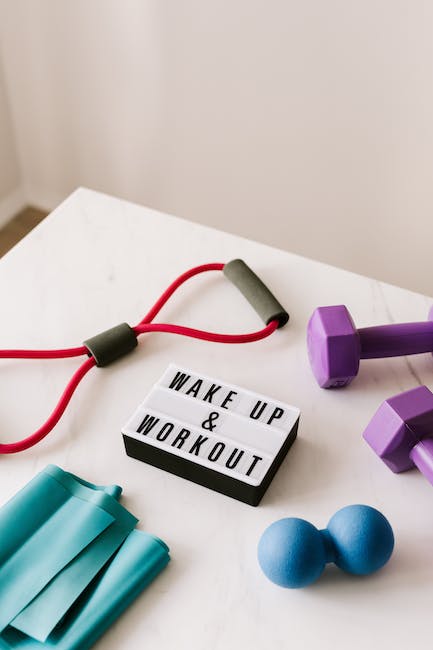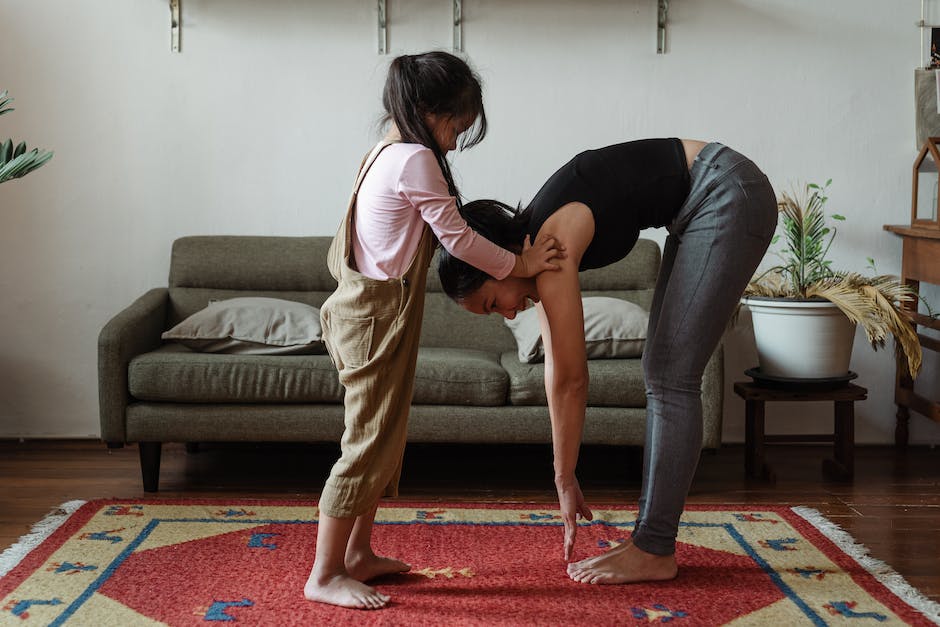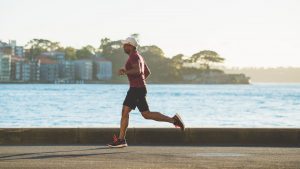
Learn What Fitness Components Are Out There
Are you wanting to get into shape, but don’t know where to start? Maybe you’re an experienced athlete looking to improve your overall performance. Either way, you need to know what fitness components are out there and how they can help you achieve your fitness goals. This article dives into the various components of fitness, explaining why they are important and how you can use them to reach your desired results. So, read on to learn more about the different fitness components out there and how you can incorporate them into your routine.
List of Content
- 1. A Quick Introduction to Fitness Components
- 2. The “Big Five” Essential Fitness Components
- 3. Developing Cardiovascular Endurance
- 4. Increasing Flexibility Through Stretching
- 5. Building Strength & Muscular Endurance
- 6. Making Sure to Include Balance & Coordination
- My Awnswers to your Questions
1. A Quick Introduction to Fitness Components
Fitness components are the different physical traits that contribute to a person’s overall level of physical fitness. Most fitness components are divided into four types: strength, cardiovascular endurance, flexibility, and body composition.
Strength is the amount of force a person can exert against an object, or their ability to lift, push, and pull. It can be strength training using weights or even strength training using your own body weight.
Cardiovascular endurance is the body’s ability to sustain a prolonged physical effort. It is an important component of fitness, as it affects how well your body can perform during sustained exercise. Examples of cardiovascular endurance activities are running, cycling, swimming, and rowing.
Flexibility is the ability to move joints and muscles through a full range of motion. It is important for reducing the risk of injury and can also help improve posture and balance. Examples of flexibility exercises include yoga, pilates, and stretching.
Body composition is the ratio of fat to muscle in the body. It is important to maintain a healthy body composition as it affects many aspects of health, such as physical performance. Eating a balanced diet and exercising regularly will help you maintain a healthy body composition.

2. The “Big Five” Essential Fitness Components
Cardiovascular / Aerobic Exercise – Also known as “cardio,” cardiovascular or aerobic exercise is important for overall health. It gets your heart rate up and can help you build endurance. Some great forms of cardio exercise include running, swimming, biking, and jumping rope. Make sure to get about 30 minutes of aerobic exercise at least 5 days a week!
Strength Training – Strength training is essential for maintaining and building muscle. This can include training with weights or even calisthenics. You don’t need to do crazy amounts of strength training to get the benefits; just a few exercises done regularly can be enough.
Flexibility Exercises – Flexibility exercises will help maintain mobility and joint health. Some common flexibility exercises include yoga, stretching, tai chi, and pilates. Devoting at least 10 minutes two times a week to flexibility exercises can make a big difference in how you feel.
Balance Exercises – Balance exercises can help maintain your coordination and reduce the risk of falls. Balance exercises can involve standing on one foot or using large exercise balls. Try to do some balance exercises at least once a week.
3. Developing Cardiovascular Endurance
is essential for improving your body’s ability to transport oxygen and energy to the working muscles over extended periods. Here are three tried and tested methods to boost your cardiovascular endurance:
- High-Intensity Interval Training (HIIT): HIIT involves intense bursts of aerobic activity, combined with short periods of rest. By pushing your limits in bursts, you can increase your aerobic capacity more efficiently, improving your cardiovascular endurance in the process.
- Aerobic Exercise: Traditional aerobic exercise is a great way to get your heart rate up and improve your cardiovascular endurance. Examples of aerobic exercises include running, biking, swimming, rowing, and circuit-style workouts.
- Low-Intensity Cardio: Low-intensity cardio is an excellent choice for those who want to ease their way into cardio exercises or cannot handle the intense bursts of HIIT. It’s also great for recovery days when your muscles and joints need some rest.
Regardless of which method you choose, remember to stay consistent with your cardiovascular training as consistency is key when it comes to improving your cardiovascular endurance. Aim to work out a few times a week, gradually increasing the intensity and duration of your workouts as you progress.
Finally, make sure to warm up before and cool down after each workout. Warming up and cooling down will help your muscles and joints adjust to the intensity of the workouts, reducing the risk of injury.
4. Increasing Flexibility Through Stretching
Whether your goal is to improve your athletic performance or just to relax, stretching can help. When done correctly it can increase your range of motion and flexibility. Here are some tips for getting the most out of the stretch:
- Go Slowly: Take your time while performing a stretch, moving into the stretch slowly and smoothly. Do not bounce or force your way into the stretch position.
- Don’t Hold Your Breath: Breathe normally and deeply while stretching, this will help your body relax and will keep you from tensing up.
- Listen to Your Body: Pay attention to how your body is feeling and don’t force your stretch if it starts to hurt. If the stretch doesn’t feel right or you feel pain, then stop stretching and try a different stretch move.
- Stretch Regularly: the most effective way to increase your flexibility is to stretch regularly and for a prolonged period of time. Making it a regular part of your routine will help you to see the best results.
When stretching at home, it’s important to remember not to stretch too hard or too deep. Check with your doctor or physical therapist before beginning any stretch program as stretching if done incorrectly can actually cause more harm than good. When performing a stretch, hold the position for 15-30 seconds while breathing deeply before releasing.
Definitely include whole-body stretching exercises in your regular exercise routine. A good full body stretching routine may include stretches for your neck, shoulders, arms, chest, back, abdominals, and legs. Stretching also helps to reduce stress and can be a great way to relax both your body and mind.
Remember to listen to your body and don’t push yourself too hard. If you’re new to stretching, start slow and make sure you’re doing each stretch correctly to get the most out of it. With consistency and patience, you can increase your range of motion and flexibility over time.
5. Building Strength & Muscular Endurance
If you’re looking to increase strength and muscular endurance, then there are a few things to consider. Here are the top 5:
- Target Movements: One of the most efficient ways to increase strength and muscular endurance is to target specific muscle groups with multi-joint exercises. This includes squats, bench presses, shoulder presses etc.
- Progressive Resistance: Rather than focusing on increasing a weight each time you exercise, focus on improving your form and using lighter weights can lead to better gains in muscular strength and overall muscular endurance. This also helps reduce the risk of injury.
- Rest Time: While rest is a necessary part of improving strength and endurance, the amount of rest needed varies from person to person. For best results, aim for 1-2 days between sessions and don’t push yourself too hard following a session.
- Nutrition: Eating the right food is essential for increasing your muscle size and developing more endurance. Consume plenty of lean proteins and complex carbs in addition to fruits and vegetables. Focus on high-quality fuel and stay away from processed foods.
Add Variety: Doing the same exercises over and over again doesn’t provide enough stimulus to see any gains in strength and endurance. Shake it up by incorporating a variety of exercises every week or month to keep your body challenged. You should also focus on staying consistent with the program.
Foam Rolling and Stretching: Foam rolling and stretching helps to reduce muscle tension and keeps them in good condition. After a workout, make sure to spend at least 10 minutes stretching and foam rolling to reduce soreness and quickly increase recovery time.
6. Making Sure to Include Balance & Coordination
Balance and coordination are both key elements of physical fitness, so it’s important to make sure to include them in your fitness routine. Fortunately, there’s a range of exercises and activities that can help you improve your balance and coordination. Here are some ideas for getting in a good balance and coordination workout:
- Yoga – Yogic poses can help strengthen your muscles and improve your balance. Focus on poses that require you to balance on one leg or hold yourself off the ground.
- Pilates – Like yoga, Pilates poses can be used to create balance and coordination. The challenging poses can help you increase your range of motion and train your body to work in coordination.
- Tai chi – This calming practice is great for improving both balance and coordination. It can also help reduce stress and build strength.
Strength training – Strength training can help increase your power and also help with balance and coordination. Increase the difficulty of exercises gradually over time and focus on balance-building exercises such as planks, squats, and single-leg deadlifts.
Sports – Playing sports is a good way to practice balance and coordination. Try activities like basketball, volleyball, or even martial arts if you’re looking for a good balance and coordination workout.
My Awnswers to your Questions
Q: What fitness components should I be aware of?
A: Fitness components encompass a variety of physical skills and attributes such as endurance, muscular strength, and flexibility. It is important to understand each component in order to create an effective workout plan.
Q: What is the role of endurance with regard to fitness?
A: Endurance is the ability of your body to sustain physical activity over a period of time. A strong level of cardiovascular fitness is important for overall health and improved performance.
Q: What is muscular strength?
A: Muscular strength is how much force your muscles can generate. This is important for lifting weights or achieving specific goals related to strength training.
Q: What is flexibility and how does it relate to fitness?
A: Flexibility is the range of motion of your joints. It is important to keep our muscles flexible and supple for overall health and to help reduce the risk of injuries. A stretching routine is a great way to help keep your body flexible.
This has been your crash course in understanding the different components of fitness. With this newfound knowledge, you are now better equipped to embark on your fitness journey and determine which elements are most important to you. So don’t wait, get moving now and start improving your well-being for the long haul!


